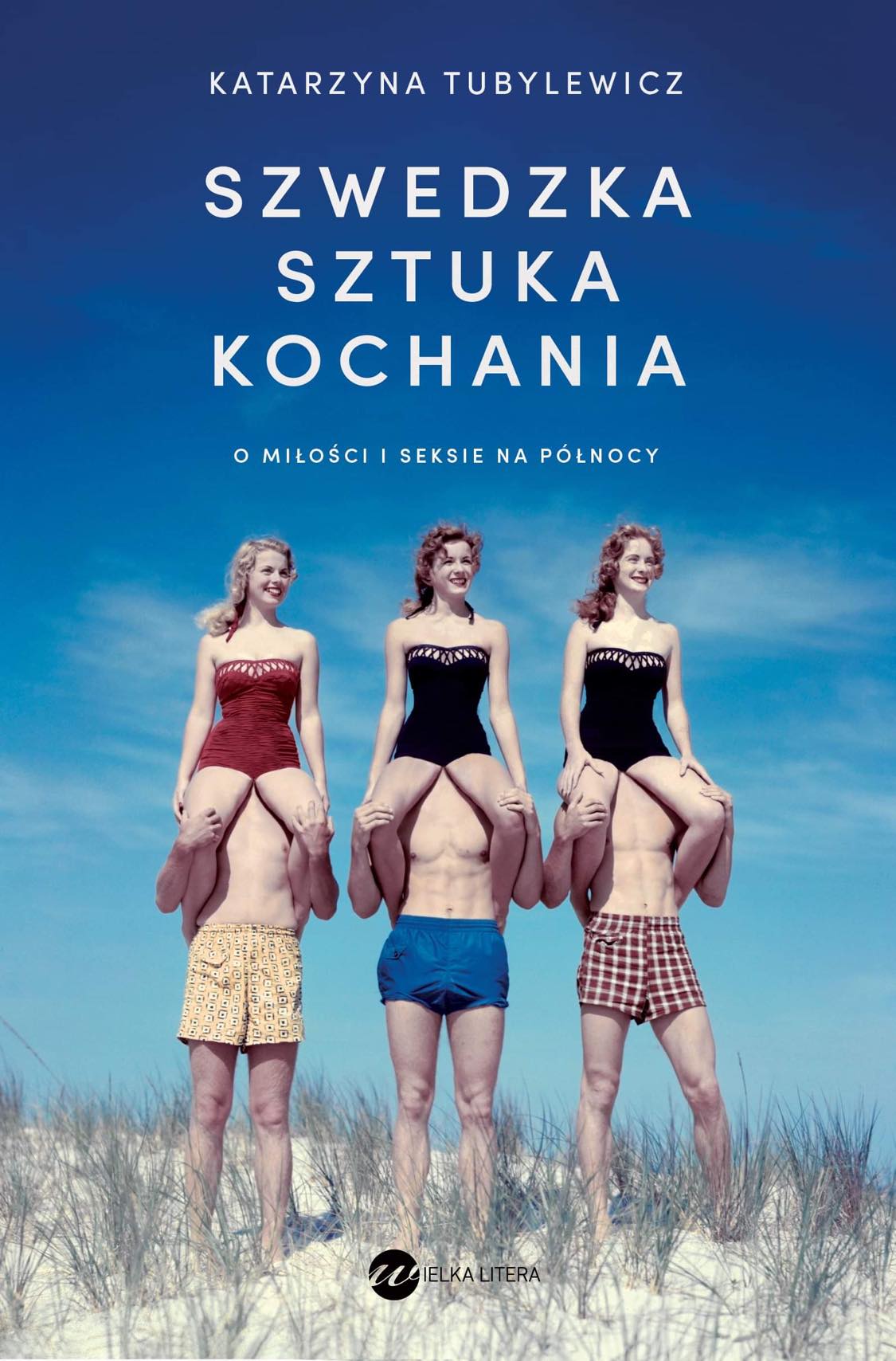
“The Swedish Art of Love. On love and sex in the North”
Katarzyna Tubylewicz's latest literary look at Sweden is also a universal and revealing book about love and sexuality. Tubylewicz and those she speaks to perceive these aspects of human nature boldly, without masks or moralizing subtexts, insightfully and from many perspectives. The human interest stories, relationships and diverse constellations her protagonists find themselves in provoke readers to think about more liberal ways of being. This book proudly celebrates of life, emotions and sensuality.
“The Swedish Art of Love” features well known, influential public figures talking about things they have never spoken about before in public, as well as ordinary people who are fascinating and very self-aware in the choices they make. These are both Swedes and Poles based in Sweden, who for a range of reasons happily practice Sweden's Art Of Love. The book covers a range of themes and relationship models – monogamy, polyamory, Tantra, rainbow partnerships and queer families – exploring issues such as faithfulness and betrayal, open relationships and radical sexual liberation, as well as “love after love”, something which does in fact exist...
Tubylewicz explores the nature of love in a country which is very tolerant and powerfully individualistic, lacking Poland's cult of the family and very Polish obsessions with history and “great national interests”. One Polish commentator in the book, when comparing Poland to Sweden, says: “Poles still haven't grown up enough to appreciate the likes of Bergman, who could devote his whole life to his existential doubts and relations between men and women”. Tubylewicz's new book highlights this contrast vividly.
Tubylewicz also talks to “love refugees” who come to Sweden to freely love those they choose to, while being respected by the local community and protected by national laws. Marcus, a Polish migrant, takes the author to a gay cruising spot found right next to a rocky beach which is popular with Stockholm based sun seekers. “This secretive world is discreet and avoids confrontations. If a heterosexual couple unwittingly move their beach blanket too close to the woods where gay men congregate, these men then move further away to give the couple room. It is a sort of dance, which is very gentle and focused on mutual consideration regarding partners who are not too familiar with each other”. The stories Tubylewicz tells about all these scenarios are never vulgar, though they are insightful and respectful of the choices everyone involved makes. Choices which are stunning in their variety. Such as those made by Tanja Suhinina who is called the “Rihanna of Swedish sexology and psychology”. This daring provocateur is professional when the need arises, but never afraid of telling the truth about herself, especially when involving intimate, emotional themes. Suhinina lives in polyamorous unions, though she is very interested in the topic of monogamy, especially the problems and ethical traps associated with it. What are they? This topic is enough to fill a whole chapter. Loving relationships involving more than two partners are covered in stories related by Linda, Erik and Hampus who for the past nine years have been living together as a threesome raising a total of nine children. They do not hide their living arrangements from anyone and are fully accepted by the community within which they reside.
Rainbow fathers raising twin daughters in a residential district near Stockholm at first cannot understand why Tubylewicz wants to talk about their family. There is nothing atypical about it after all! They are a perfectly ordinary family, like any other Svenssons – the Swedish equivalent of the ordinary Smiths next door! Here we have two men who love each other very much, along with their nine year old daughters, who like boasting about having two daddies. Is there anything at all odd about this arrangement?
The Swedish Art Of Love is also the story of “love after love”. Tubylewicz recounts the extra-ordinary story of Bingo, Alex and Katrin, who show that: “It is possible to separate and not only maintain proper relations for the sake of the children, but also simply become the best of friends. And at times cooperate the way Bingo and Katrin do. To buy summer homes next door to each other so the children are close to everyone. A woman's former partners can be the best of buddies, going on joint adventures with their sons. Showing how you can go together on golfing holidays along with your former parents in law, who themselves are divorced. (…) You can be and not be a family unit all at once. You can have singletons who are sexually unattached, while still being on stable, friendly terms with the support of a loving, multigenerational family.”
The Swedish Art Of Love is proof of how love and sexuality are some of the most important existential experiences.
Tubylewicz challenges many established stereotypes, inviting audiences to think by showing how the private sphere is also political and essential to our existence. The book offers hope, the readers encounter people who enjoy free, wise and loving lives. In addition, Tubylewicz explores the famous myth of what US president Dwight Eisenhower called the “Swedish sin”.


